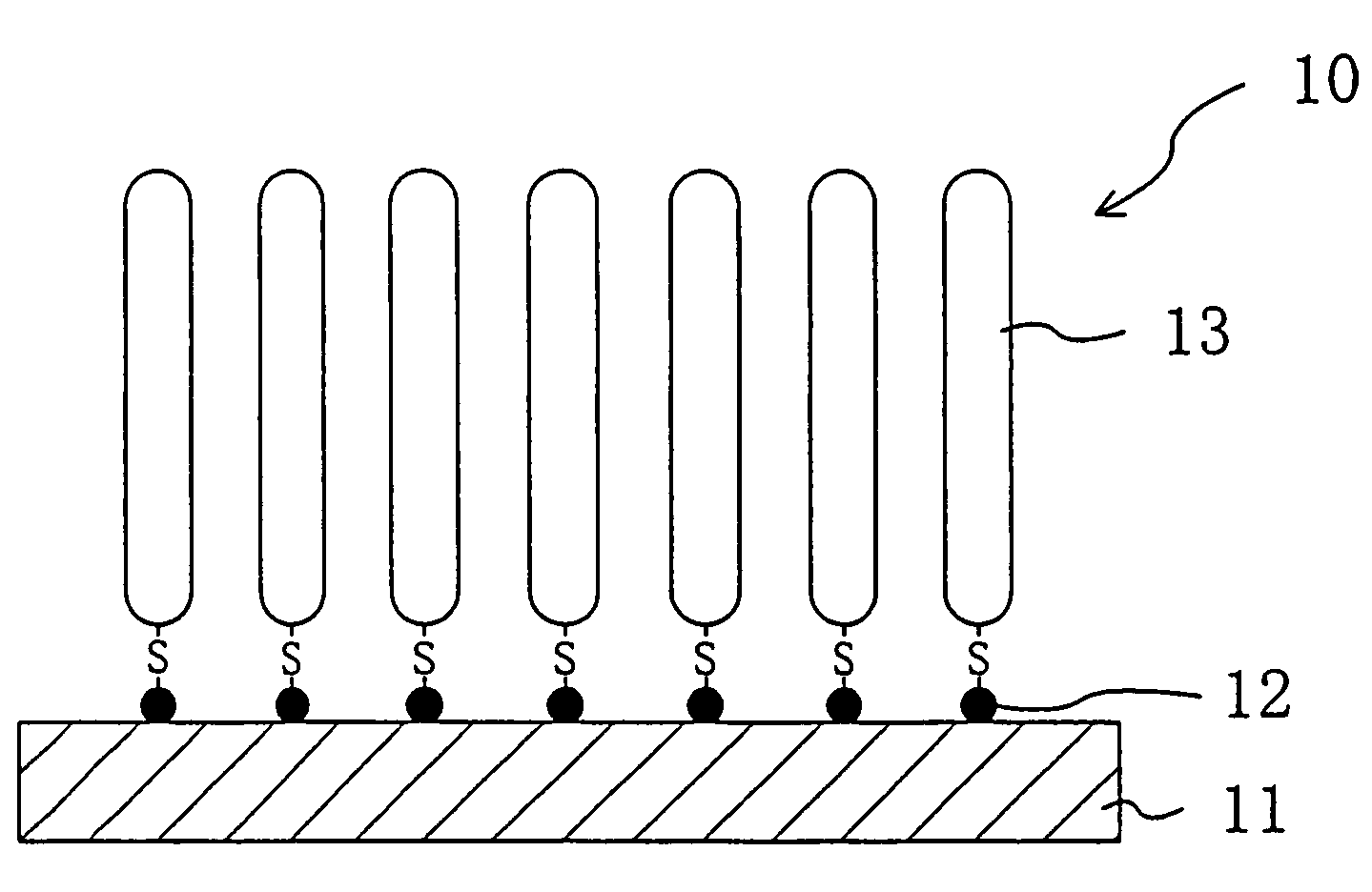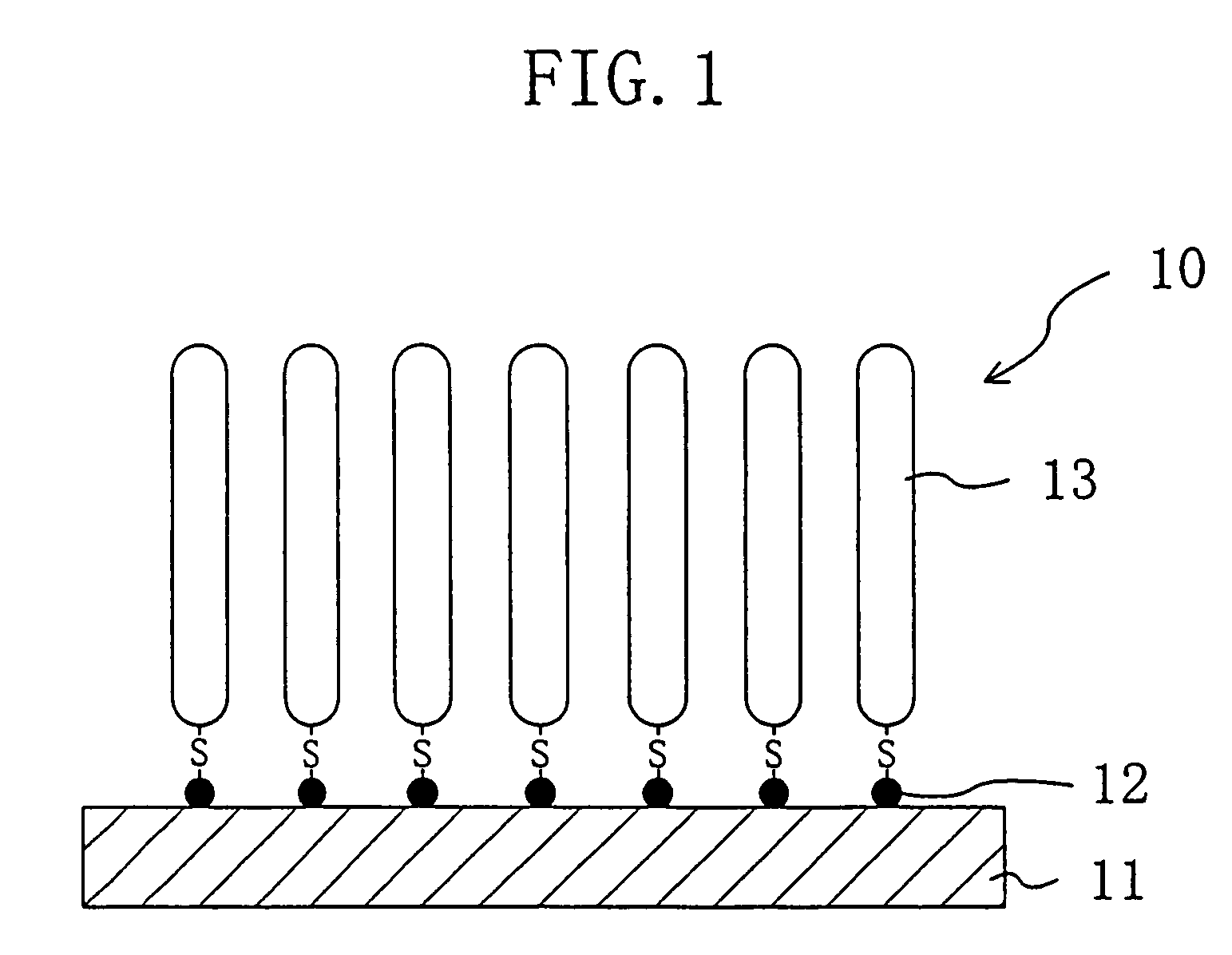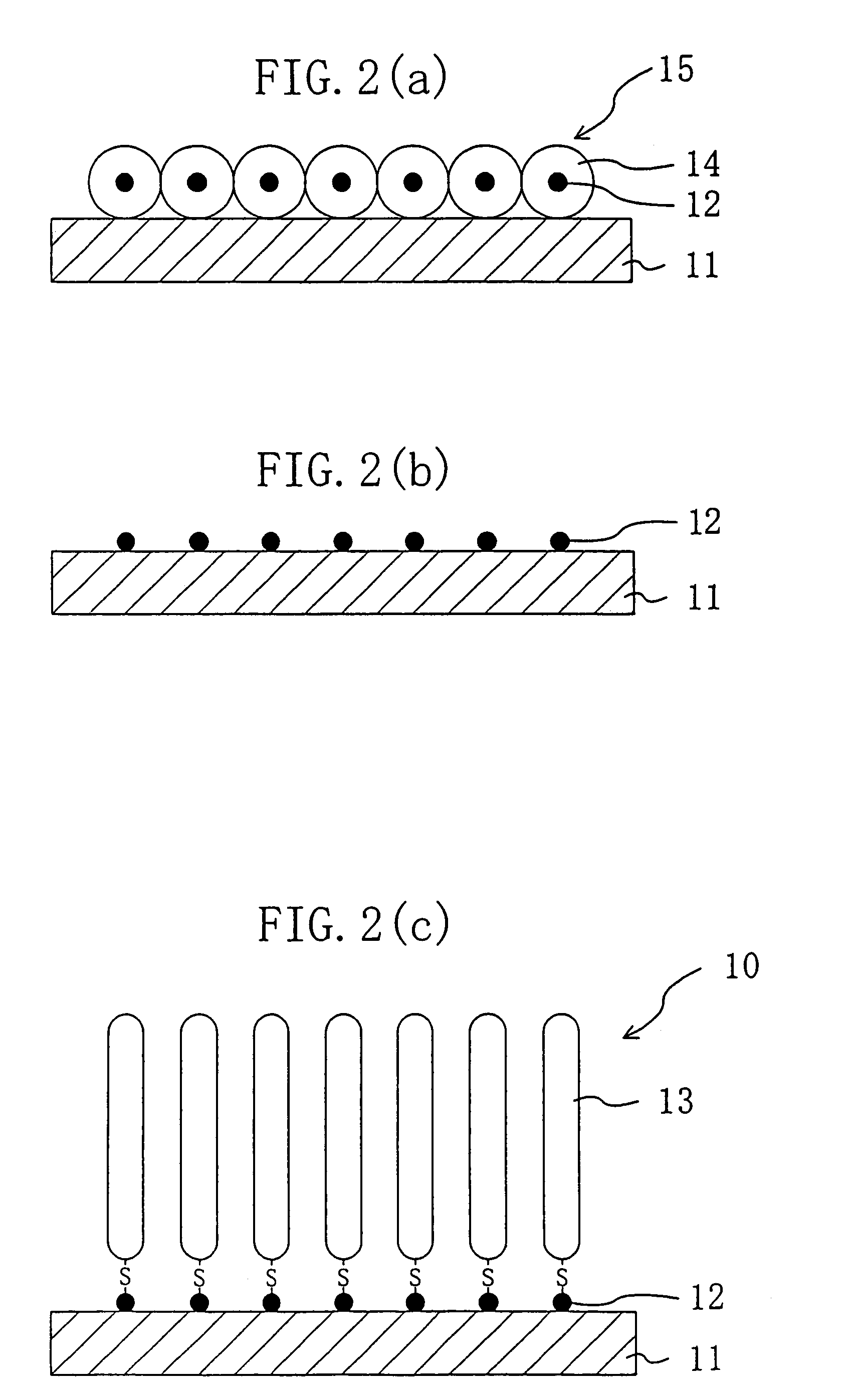Method for manufacturing a nucleotide detector
- Summary
- Abstract
- Description
- Claims
- Application Information
AI Technical Summary
Benefits of technology
Problems solved by technology
Method used
Image
Examples
example 1
[0186]On a surface of a silicon substrate subjected to hydrophilic treatment with active ozone under ultraviolet irradiation at 110° C., apoferritin particles containing gold particles inside were arranged two-dimensionally at high density with high precision as shown in FIG. 2(a) by method 5 described above. For this process, used was a liquid containing gold particle-containing apoferritin in a normal saline solution in a concentration of 50 mg / ml. The liquid was drawn out from a container containing the liquid with a syringe at a drawing rate (liquid level lowering rate) of 0.1 mm / min.
[0187]The thus-produced substrate was heat-treated in a nitrogen gas atmosphere at 450° C. for one hour, to remove the apoferritin as the protein moiety and thus attain a substrate with only gold particles placed thereon in the shape of dots two-dimensionally at high density with high precision.
[0188]The resultant substrate was then put in contact with a thiol DNA aqueous solution, to attain a DNA s...
example 2
[0192]An RNA sensor was produced in the same manner as that described in Example 1, except that thiol RNAs (thiol RNAs produced using mRNAs obtained by transcription of T4 phages with sulfur atoms bonded to ends of the mRNAs) was used in place of the thiol DNA.
[0193]Using the resultant RNA sensor, a detection test was performed for separately synthesized complementary RNA. As a result, high fluorescence intensity was exhibited stably, and thus detection was very easy.
example 3
[0194]First, as in Example 1, gold particles were placed two-dimensionally on a silicon substrate. A resin resist film made of polymthyl methacrylate (PMMA) was then formed on the substrate, and a photomask having openings was formed on the resin resist film.
[0195]Subsequently, the substrate was irradiated with light from above of the photomask, and then treated with a developer to pattern the resin resist film, to thereby expose part of the gold particles on the substrate.
[0196]Thereafter, thiol DNAs were bonded to the gold particles on the substrate.
[0197]The above operation was repeated while the type of the thiol DNAs (in base sequence or the like) to be bonded to the exposed gold particles was changed one after another, to attain a multi-type DNA sensor with DNAs having a number of different sequences bonded to the substrate. As the thiol DNAs, T4 phage DNAs were used, and sulfur atoms were bonded to ends of the DNAs. A solution containing such thiol DNAs in a concentration of ...
PUM
| Property | Measurement | Unit |
|---|---|---|
| Temperature | aaaaa | aaaaa |
| Temperature | aaaaa | aaaaa |
| Size | aaaaa | aaaaa |
Abstract
Description
Claims
Application Information
 Login to View More
Login to View More - R&D
- Intellectual Property
- Life Sciences
- Materials
- Tech Scout
- Unparalleled Data Quality
- Higher Quality Content
- 60% Fewer Hallucinations
Browse by: Latest US Patents, China's latest patents, Technical Efficacy Thesaurus, Application Domain, Technology Topic, Popular Technical Reports.
© 2025 PatSnap. All rights reserved.Legal|Privacy policy|Modern Slavery Act Transparency Statement|Sitemap|About US| Contact US: help@patsnap.com



